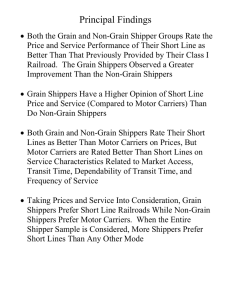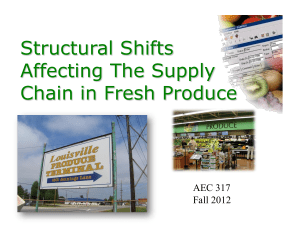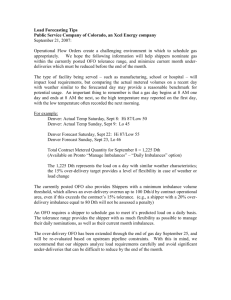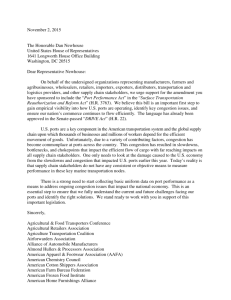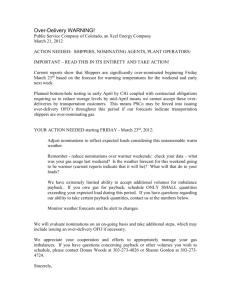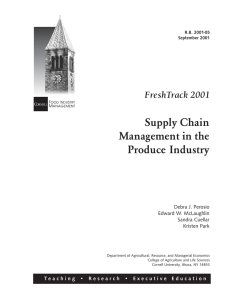A Growing Dilemma
advertisement
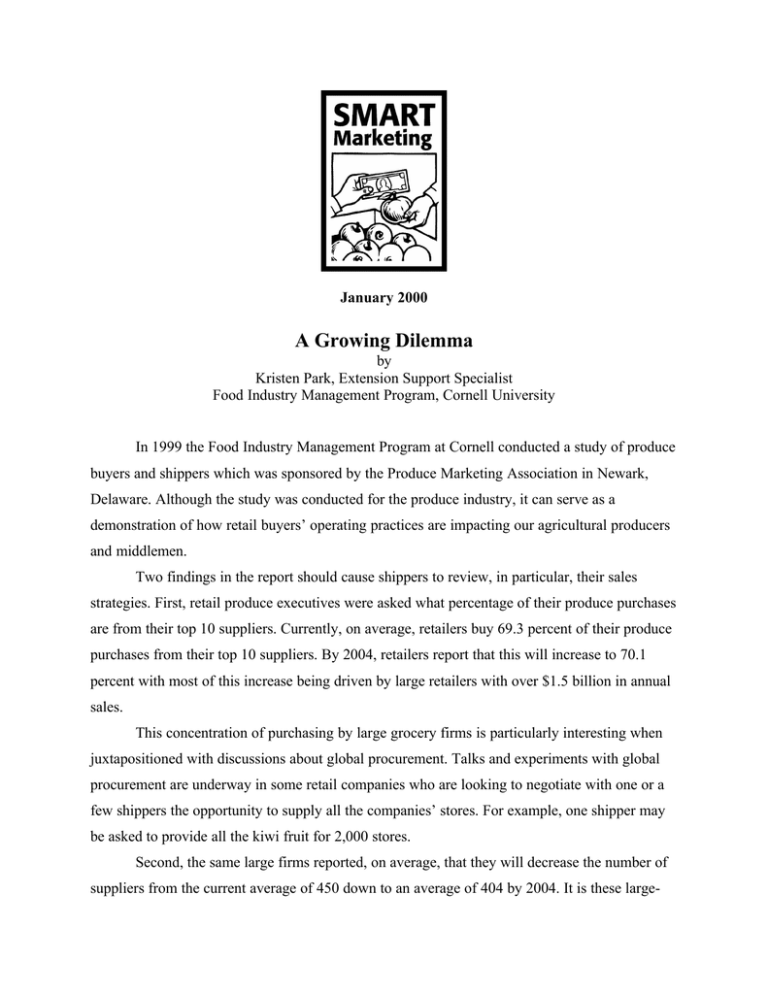
January 2000 A Growing Dilemma by Kristen Park, Extension Support Specialist Food Industry Management Program, Cornell University In 1999 the Food Industry Management Program at Cornell conducted a study of produce buyers and shippers which was sponsored by the Produce Marketing Association in Newark, Delaware. Although the study was conducted for the produce industry, it can serve as a demonstration of how retail buyers’ operating practices are impacting our agricultural producers and middlemen. Two findings in the report should cause shippers to review, in particular, their sales strategies. First, retail produce executives were asked what percentage of their produce purchases are from their top 10 suppliers. Currently, on average, retailers buy 69.3 percent of their produce purchases from their top 10 suppliers. By 2004, retailers report that this will increase to 70.1 percent with most of this increase being driven by large retailers with over $1.5 billion in annual sales. This concentration of purchasing by large grocery firms is particularly interesting when juxtapositioned with discussions about global procurement. Talks and experiments with global procurement are underway in some retail companies who are looking to negotiate with one or a few shippers the opportunity to supply all the companies’ stores. For example, one shipper may be asked to provide all the kiwi fruit for 2,000 stores. Second, the same large firms reported, on average, that they will decrease the number of suppliers from the current average of 450 down to an average of 404 by 2004. It is these large- size firms who do the majority of direct purchasing from grower/shippers. Therefore, downsizing the number of suppliers from whom retailers purchase may affect the supplier population. What are some strategies which could be used by grower/shippers to meet these changes in the retail environment? One obvious strategy is to grow to expand your control horizontally and/or vertically. In this same study, shippers were asked how their company has grown in the last 5 years. Most shippers indicated that they are adding growers to their roster of growers for whom they sell. The growers could be local growers or growers in distant production areas with complementary growing seasons. In addition, most were adding different commodities to their sales sheets and thus expanding into new product lines. Very few, however, in fact less than a handful, mentioned expanding their control through acquisitions, mergers or alliances. A couple of thoughts occur as to why this might be. One, most of the shippers interviewed were not the larger, national or branded shippers. Therefore, many of them are independent operators or are in partnership arrangements and mergers may cut to the heart of these shippers. These shippers who are still entrepreneurs may find it hard to be objective about sharing their business with other stakeholders. A hypothesis is that smaller and medium-sized shippers are not planning growth through mergers or acquisitions, but are relying on expansion by increasing the number of producers represented, or by encouraging increased production of existing producers. If this is so, smaller and medium sized shippers may be left out of buyers’ offices as mergers and alliances continue in the top tier of shippers. Mergers and alliances among larger shippers are starting to escalate and will form even larger suppliers with resources beyond the grasp of smaller firms, while growth of smaller firms through increases in grower numbers and productivity is likely to be more limited. To remain competitive you may want to consider some of the following strategies already strengthening competitive conditions for the firms which have adopted them. Expand control, horizontally or vertically. • Consolidate horizontally. Acquire, merge and/or form alliances with other grower/shipper organizations. Means need to be found to coordinate with other grower/shippers to obtain the supplies required to do business with ever-larger wholesale and retail accounts. Organizational opportunities include joint sales agencies, various forms of cooperative activity, contracting, and new creative equity alliances. Become a multi-region and/or multi-commodity shipper. This means expanding the product line by extending into new commodities and/or new geographical regions to become more of a “one-stop shopping” source on a year-round basis. • Integrate vertically. Although vertical integration is common in the produce industry among growers, packers and shippers and between wholesalers and retailers, there have been very few attempts at vertical organizations that bridge the gulf between grower/shipper and wholesaler/retailer. Yet such innovative arrangements may be a breath of fresh air for the traditional industry structure. Moreover, many growers may be well served by considering aligning themselves more formally with packing and selling companies. Otherwise, the picture for certain agricultural producers may be dim: if they are not adding value in meaningful ways, they will be able to claim only whatever system residual is left, if any, after others have extracted their returns. Many of the newly forged “partnerships” between produce shippers and retailers, although short of formalized ownership integration are certainly steps in the direction of more effective vertical coordination.
